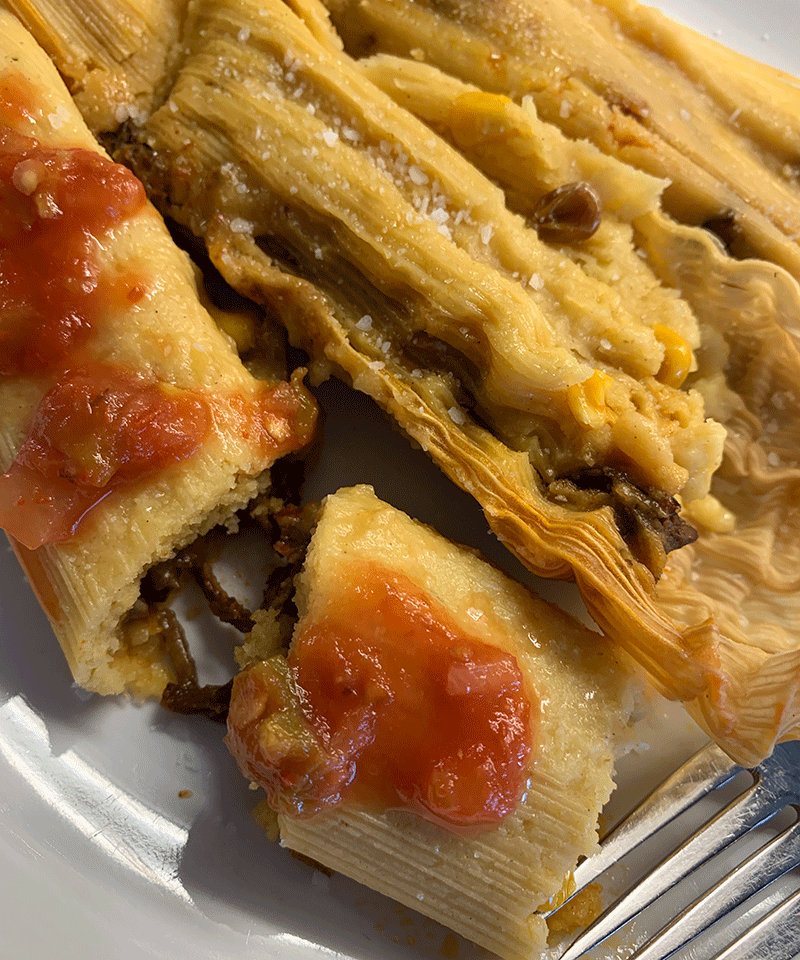
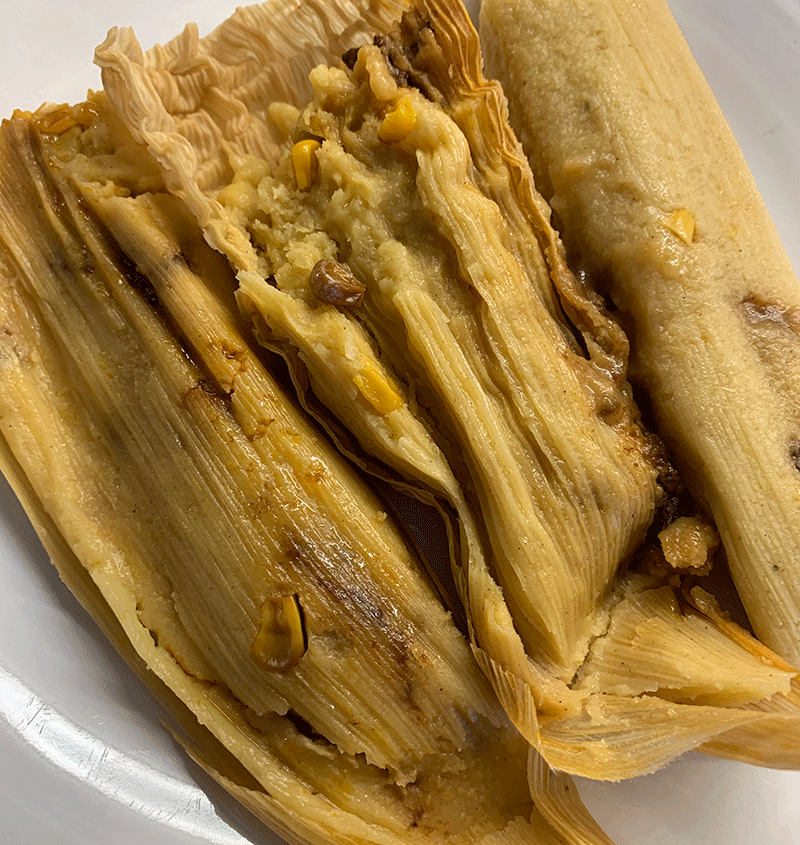
In a year marked by extraordinary disruptions of all sorts, we like many of our family, friends, and work acquaintances have found comfort and solace in what are often simple, but meaningful, family traditions.
I truly hope you and your family have had similar experiences as well, embracing or reviving family and/or communal traditions that have some genuine meaning to you and yours.
Personally I don’t think these traditions need be monumental, life-changing, events; many of life’s most encouraging and endearing customs and conventions are damned simple – and for many of us, involve food.
Here’s an example from our own family life; even from childhood days growing up in my modest household in the Texas Panhandle, we’ve enjoyed tamales as part of our holiday tradition over the past fifty plus years.

We didn’t host tamaladas (a tamale making party) in my household growing up, but several hispanic friends did, and even though anglo I was welcomed every year and given some (relatively simple) task to do as hundreds of tamales were crafted around a big table in the kitchen.
My wife and I didn’t craft our own holiday tamales for several years during my training in San Antonio (there were tamales everywhere during the holidays!) and later in SLC, though we started our own tradition making tamales for Christmas Eve, and later hosting tamaladas of our own, back in 1988, and have done so every year since.
And yes, while we pretty damned consistently adhere to a much-enjoyed and appreciated Primal / paleo food plan year round, we still bow to tradition and prepare a batch of tamales with family for Christmas Eve. IF you don’t have the least bit of interest in venturing far from the Primal/paleo path, by all means don’t, and stop reading here…
For those curious about the option, yes, we have tried a host of gluten free masa alternatives out there; if you’re genuinely interested you should experiment after some easy research online. After trying a host of alternatives, we still make a batch of traditional masa for holiday tamales – we find the other options just too far off the mark for our palates.
We used the same recipe for 29 years when preparing our filling from scratch, slow cooking pork shoulder with a bevy of spices and chiles, though changed to this recipe in 2017 after having a friend share it with us.
You’ll note that I’ve not included a masa recipe here; there are a host of great options available (like this one), and I’d recommend, if you’re truly serious about your tamales, picking up a copy of one of the many great tamale cookbooks out there (I still reach for Tamales by Miller, Pyles, and Sedlar most often when looking for creative masa’s).
And by the way, here’s the recipe we used for years, and it includes a fairly traditional, and very good, masa recipe.
1 and 1/2 lb boneless pork shoulder, trimmed, 1-inch pieces
1 and 1/2 lb pork belly, trimmed, 1-inch pieces
1 tbsp avocado or olive oil
1 large onion, chopped fine
10-21 ancho chiles
8-9 guajillo chiles
4-5 morita chiles
4-5 pasilla chiles (chile negro)
3 cups chicken broth, perhaps more
1 tbsp coriander seeds
2 tbsp cumin seeds
8 garlic cloves, peeled
2 bay leaves
2 tbsp kosher salt
2 tsp crushed Mexican oregano
1 tbsp ACV
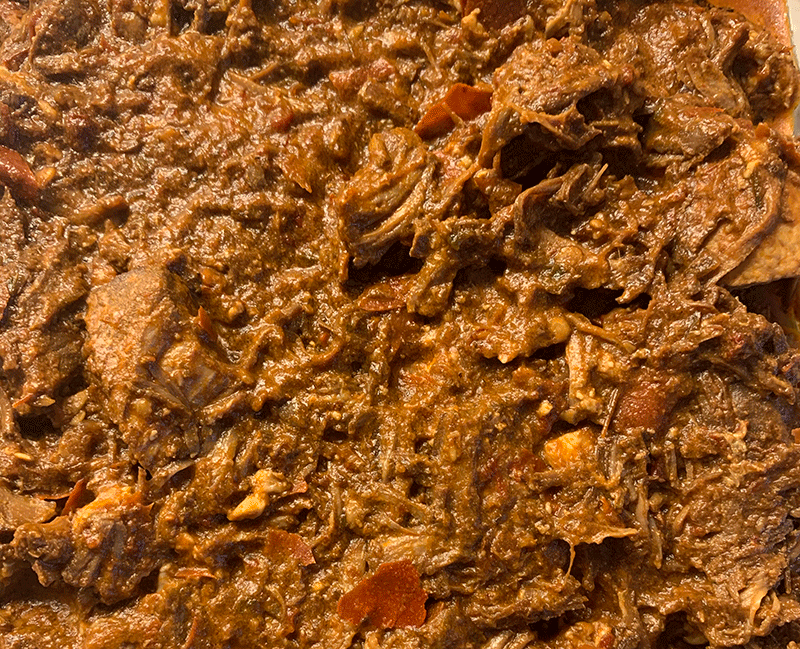
Prep the meat and chiles (stem, seed, and toast).
Heat the oil in a large saucepan and then sauté the onion until it begins to caramelize; now add the prepped chiles and broth and bring to a boil. Remove from the heat, cover, let rest 30 minutes, stir and recover, and let rest another 30 minutes.
Meanwhile toast the coriander seeds in a hot dry skillet for 90 seconds, then add the cumin seeds for another 30 seconds. Remove from the hot pan, cool, then grind.
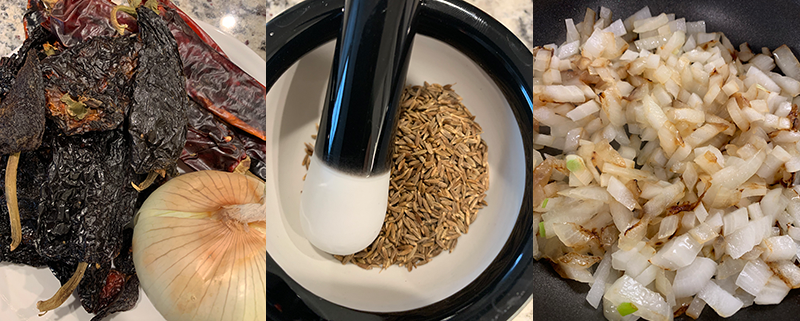
Now puree the chile mixture in your trusty blender, along with the toasted and ground spices, garlic, and the oregano.
Add the meat to your braising pot or Dutch oven and pour in the chile puree, stir to cover. Add the bay leaves and salt, stir again. Bring to a simmer over medium high heat on the stovetop, then cover, and throw in a 275 degree oven for three hours, stirring every hour.
The meat should be fall apart tender at this point; if so, let cool uncovered for 15 minutes, then skim the fat and pull the bay leaves. Shred the meat, stir in the vinegar, and cool enough to throw in the fridge for at least three hours (see note above).
Now your ambrosial tamale filling is ready to fill your tamales or use as otherwise suits you (see discussion above).
Enjoy.
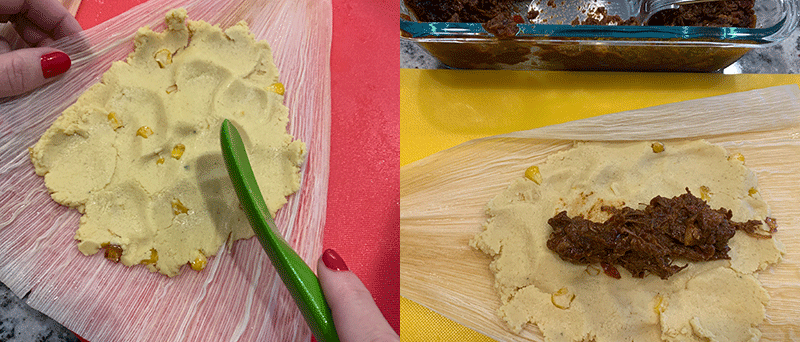
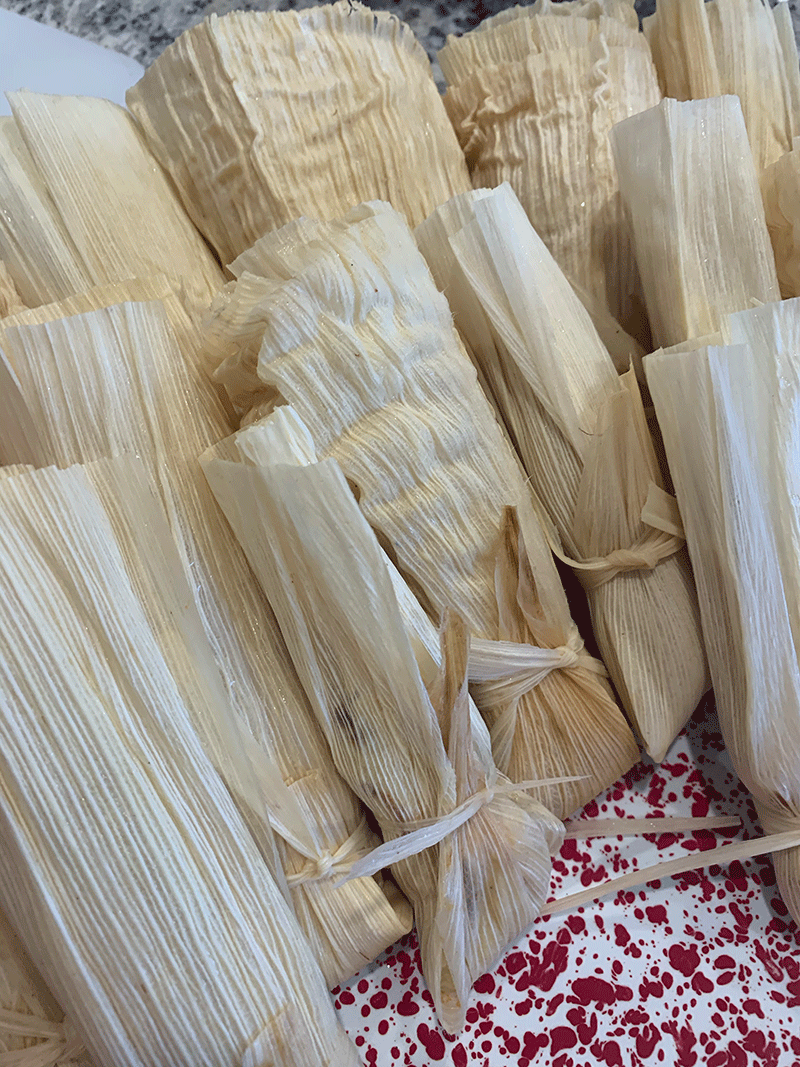
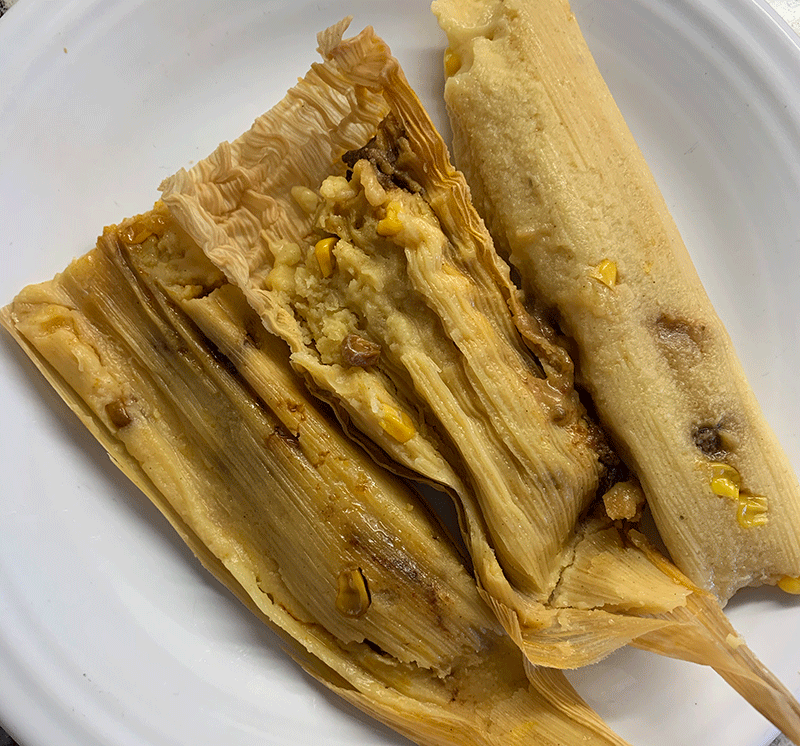



[…] over on the Older Bolder Life I’ve posted this nifty recipe for what has become our go to Christmas Eve tamale…these days (displacing our twenty-plus-year previous favorite recipe three years ago) – for […]